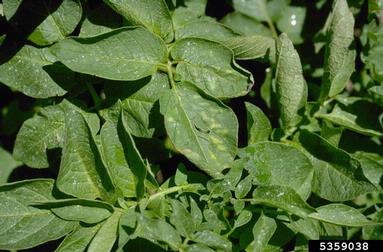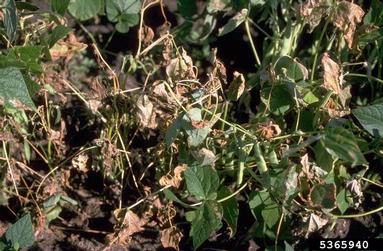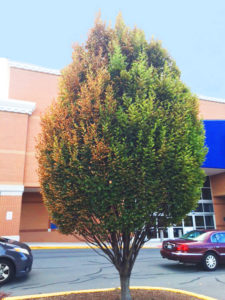We’re only in mid-June but we’ve already experienced multiple days over 90 degrees. If this is any indication of the rest of the summer it’s going to be a hot one! As we enjoy air conditioning inside, our trees and shrubs outside endure the heat. High temperatures can cause a lot of health issues and unsightly symptoms but if you prepare for the heat and regularly provide your trees with some TLC they can make it through the summer unscathed.
Signs of Heat Stress
- Yellowing of leaves/needles
- Leaves/needles dropping from your tree or shrub
- Fruit dropping early from your tree or shrub
- Leaves with crisp edges
- Browning leaves/needles
- Wilting & Curling leaves
- Trees with blooms will stop blooming/drop blooms
- Rust-colored spots or bumps
Check out the photos below so you know what to look out for.





How to Stop Heat Stress in its Tracks
Unfortunately, you can’t just move trees and shrubs inside or into the shade to reduce heat stress. However, there are steps you can take to minimize the heat stress put on your plants. Follow our tips below to prevent heat stress and reduce its effects if your tree is already showing signs.
Prevent
Although you can’t prevent the heat, you can take a few steps to prevent heat damage to your high-value trees and shrubs.
1. Utilize Tree Growth Regulators: Tree growth regulators utilize three techniques to help make your tree drought resistant. First, it gently slows the growth of the tree. Second, it develops thicker waxy cuticle (coating) & a thicker epidermis (skin) that is densely covered with fine hairs. These two techniques help reduce water loss in a tree. Lastly, it reallocates energy from new leaf growth to fine feeder root growth. This helps the tree absorb more water.
The tree growth regulator also allows you to prune less often and reduce costs related to watering and fertilizing. On the aesthetic side, the leaves of trees treated with tree growth regulator tend to be greener than untreated trees. One treatment will last up to 3 years.
2. Plant Drought-Resistant Plants: If you’re planning to plant new trees, look for drought-resistant species. This will help you save money on your watering bill while still allowing your tree to thrive in hot temperatures. We recommend the following drought-tolerant trees: ginko, eastern redbud, crepe myrtle, elm, hackberry, hawthorn, honey locust, leyland cypress, oak, red maple, sassafras, and sumac.
Mitigate
1. Water Trees & Shrubs Regularly: One of the most important ways to combat heat stress is to provide your tree with enough water. Make sure you’re watering your trees & shrubs properly during these hot summer months with our tips below.
- Focus on the critical root zone when watering. Wetting foliage is a waste of water and can promote the spread of diseases.
- DON’T use a sprinkler. This only wets the top layer of soil and doesn’t properly water the tree.
- Water in the morning to avoid evaporation and to help trees deal with the heat throughout the day.
- Water deeply and thoroughly 1 to 2 times a week.
- Put your normal hose somewhere in the critical root zone.
- Turn hose on to a dribble
- Leave for 2-3 hours
- Move the hose to a different spot in the critical root zone and leave for 2-3 hours. Repeat this step 1-3 times.
- You want the soil to be moist but not soaking. You should NOT be able to make a mud ball out of the soil.
- It’s okay for some portions of the soil to be wet and some to be dry.
2. Aerate Your Soil: Soil that is compacted can cause water to run off instead of being absorbed into the soil where it can reach the roots. If you’re watering your trees/shrubs but still seeing signs of heat stress, this may be the issue. You can combat this by having the soil in your tree’s critical root zone aerated. Our Arborists will use high-velocity air tools and techniques to properly aerate the tree’s critical root zone (CRZ) loosening the soil. This creates macro and micropore space, making room for water and nutrients to reach the roots. Learn More About Soil Aeration
3. Mulch Around Your Trees & Shrubs: Mulching around trees can help control the temperature of the soil keeping the tree/shrub’s roots cooler. Mulch also helps the soil retain moisture and nutrients that can help reduce the heat stress on the tree. Follow our mulching tips below for the best results.
Size: The best mulching goes out as far as the drip line of the tree. However, this isn’t reasonable for most homeowners with large trees. If this isn’t practical, apply mulch in a 2 to 3-foot radius around the tree instead.
Depth: About 2-4 inches
- Do not pile the mulch against the trunk of the tree. Instead keep it away from the trunk, so that the root flare zone is visible.
- To refresh the look of mulch, lightly rake the top layers of the mulch, or simply remove the old mulch and replace with new mulch. Don’t pile new layers on top of old ones.
- Do not use fresh wood chips for mulching around young trees. Fresh wood chips have a higher acidity and can injury a young tree.
4. Monitor for Insects & Diseases: Although this won’t stop heat stress it can help stop insects and diseases that are drawn to stressed trees. While your tree is busy trying to fight the summer heat, insects and diseases that are active in summer can target your trees and shrubs. Because your tree/shurb is stressed from the heat it will have a harder time fighting off these insects and diseases and will most likely incur a lot of damage if you don’t step in. Keep a close eye on your trees for signs of borers, spider mites, Japanese beetles, aphids, bagworms, and scale.
Common symptoms of summer insects/diseases to look out for include:
- defoliation
- drooping leaves
- yellow spots
- honeydew/sooty mold
- premature leaf drop
- twig dieback
- webbing
- cone-shaped brown bags hanging from trees
- cankers on tree trunks
Repair
1. Fall Fertilization: Once your fall comes your trees are going to be tired from battling the heat during the summer months. Providing your trees with Bio-stimulants will help them recover from the summer heat and prepare them for their long winter nap.
Need help preventing, mitigating, or repairing heat stress? Contact us at 703.573.3029 or book an appointment with one of our Certified Arborists through our online booking system.


